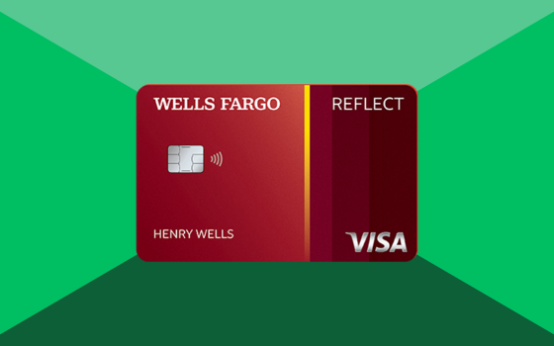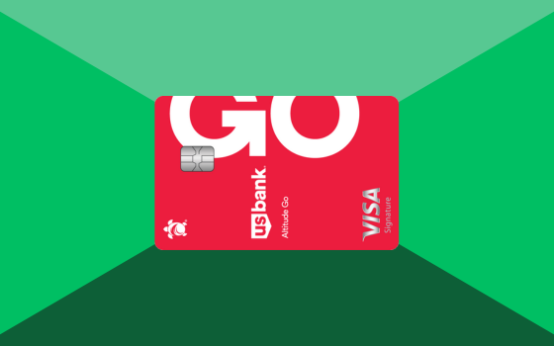The U.S. Bank Altitude Go Visa Card is a no-annual-fee option that has made its name thanks to strong dining and streaming rewards. Whether you’re a college student, a self-employed professional, or someone simply looking to expand their credit profile, it’s a card that combines everyday perks with a relatively low barrier of entry.
Still, many U.S. consumers wonder: What do I really need to qualify, and how can I improve my odds of getting approved?
Why Choose This Credit Card?
While there are hundreds of cards in the U.S. market, this one stands out because:
- 4x rewards on dining and delivery – great for anyone who spends heavily on restaurants or DoorDash/Uber Eats.
- 2x points on groceries, gas, and streaming services – categories that fit most American budgets.
- $0 annual fee – unlike premium cards that can charge $95–$550 a year.
- Introductory bonus of 20,000 points (worth $200).
- 0% intro APR for 12 months, then variable APR from 18.24%–29.24%.
For Americans who don’t want hidden annual costs but still crave rewards, this card competes well against Chase Freedom Flex and Capital One SavorOne.
Requirements for Approval
While U.S. Bank doesn’t publish exact cutoffs, consumer reports and user experiences reveal some common patterns:
- Minimum Credit Score: Typically 690+ (Good credit). Some applicants with scores in the 660s report approvals if income and history are strong.
- Proof of Income: Pay stubs, W-2s, or 1099 forms for contractors. Self-employed workers may need tax returns (Schedule C).
- Debt-to-Income Ratio (DTI): Under 40% is ideal. A high DTI often results in denial.
- Age & Residency: You must be at least 18, a U.S. resident or citizen, and provide a valid Social Security Number or ITIN.
- Employment Verification: Not always required, but unemployed applicants face higher scrutiny unless they show strong savings or spousal income.
How to Increase Your Chances of Approval
Simple Steps
- Check Your Credit Score First: Use free services like Credit Karma or Experian. If you’re below 680, apply only after improvements.
- Pay Down Existing Debt: Reduce credit utilization to under 30% before applying.
- Avoid Multiple Applications: Too many hard inquiries in 90 days can tank approval chances.
- Freeze Unused Cards: If you have inactive cards with low limits, close them after consulting your credit profile.
Advanced Strategies
- Relationship Banking: If you already have a checking or savings account with U.S. Bank, approval odds increase. One Reddit user reported going from denial to approval after opening a checking account and waiting 60 days.
- Prequalification Tools: Use U.S. Bank’s online prequalification tool before applying. It won’t affect your score and can flag issues early.
- Manual Review Request: If denied, call reconsideration. Explaining stable freelance income or providing extra documentation can flip a “no” into a “yes.”
- Report Additional Income: Some self-employed workers forget to include side hustles like Airbnb or Uber earnings. Every dollar counts in underwriting.
Step-by-Step: How to Apply for the U.S. Bank Altitude Go
- Go to the U.S. Bank Website: Navigate to the Altitude Go Visa Card page.
- Click “Apply Now”: Start the online application.
- Enter Personal Information: Name, address, SSN/ITIN, phone, and email.
- Provide Employment Details: Employer name, position, and annual income. Self-employed? Select that option and attach tax forms if requested.
- Authorize Credit Pull: U.S. Bank will perform a hard inquiry with bureaus like Experian or TransUnion.
- Wait for Instant Decision: Many applicants receive results in under 60 seconds. If not, you may be asked for additional documentation.
- Approval & Card Delivery: If approved, the card ships within 7–10 business days.
Frequently Asked Questions (FAQ) about Bank Altitude Go Visa
Can I get approved with bad credit or collections (“nome sujo” equivalent in the U.S.)?
Unlikely. While some users with scores as low as 640 have succeeded, serious derogatories like bankruptcies or charge-offs in the past 12 months almost always lead to denial.
What is the minimum credit score accepted?
Most approvals happen at 690+, though strong applicants with 660–680 may sneak in.
Do I need to be employed?
Not necessarily. Stay-at-home spouses or retirees can use household income. Self-employed applicants (1099 workers) must prove consistent income.
How long do I need to build history before applying?
U.S. Bank usually wants at least 12 months of credit history. Thin files often get rejected.
Does U.S. Bank approve immigrants with ITINs?
Yes, but approvals are stricter. Proof of U.S. address and income is required.
Is there a fixed monthly payment option?
No. Like most U.S. credit cards, this one uses variable APR. For fixed payments, consider a personal loan or a buy-now-pay-later service.
Little-Known Tips to Boost Approval Odds
- Negotiate With a Branch Manager: Applying in person sometimes helps. Managers can escalate applications for manual review.
- Apply After Payday: Showing a recent bank balance higher than usual can work in your favor.
- Timing Matters: End of quarter (March, June, September, December) is when banks often push approvals to meet sales quotas.
- Client Story: A self-employed graphic designer with a 420 credit score was initially denied. After opening a U.S. Bank secured card, using it for six months, and building a relationship with the branch, he reapplied and was approved with a limit of $1,000.
Alternatives If You’re Denied in Bank Altitude Go Visa
Not everyone will qualify, especially with poor or limited credit. Consider:
- U.S. Bank Cash+ Visa Secured: Build history with a deposit-backed line of credit.
- Capital One Platinum Secured: Flexible deposit options starting at $49.
- Discover it® Student Cash Back: Great for students with no history.
- Credit Union Cards: Local credit unions often approve lower scores (as low as 580) with proof of income.
- Retail Store Cards: Easier approvals, but higher APRs—use cautiously.
Watch Out for Hidden Pitfalls
Even with approval, don’t overlook these:
- APR after Intro Period: The jump from 0% to 29.24% can be a shock.
- Foreign Transaction Fees: At 3%, international travelers lose rewards quickly.
- Deferred Interest Traps: Some promos cancel your 0% APR if you miss a single payment.
- Low Credit Limits: Many first-time approvals come with $1,000–$1,500 limits. Don’t expect $10,000 right away.
Bank Altitude Go Visa: Conclusion
Getting approved for the U.S. Bank Altitude Go Visa Card is about preparation, timing, and knowing the bank’s playbook. From maintaining a healthy credit score to leveraging a preexisting relationship with U.S. Bank, there are multiple strategies to tip the odds in your favor.
Still, the card won’t be right for everyone. Compare alternatives, simulate scenarios with your real budget, and always choose the option that fits your spending habits and financial profile.
By clicking, you will be redirected to a new website.




